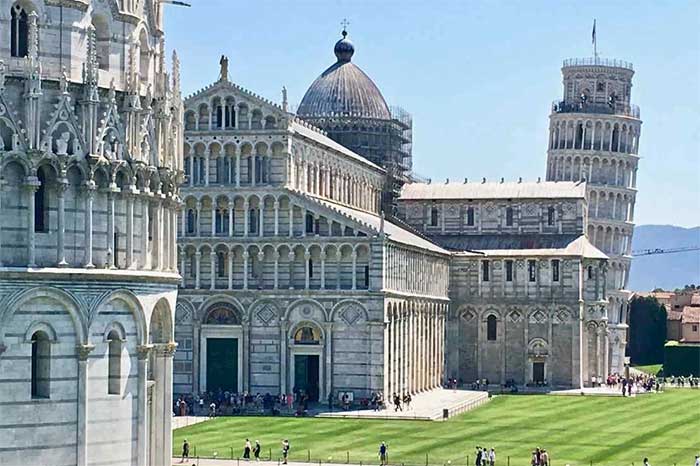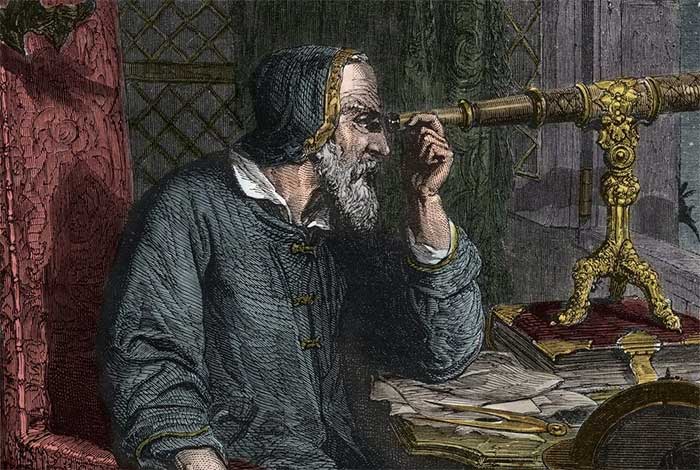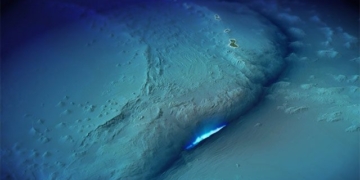If Bill Gates dropped out of Harvard University to establish the leading technology company Microsoft, then before this billionaire, there was another great figure who did something similar to completely change the world.
On this day in history, February 15, 1564, the renowned astronomer, mathematician, and physicist Galileo Galilei was born. He is often referred to as the “father” or the mastermind of modern science.
From a Talented Boy to a College Dropout
Galileo Galilei was born in the city of Pisa, Italy. He was the eldest son in a family of six children. To ensure his success, his father meticulously planned his education. Galileo was taught Greek and Latin, along with various other subjects, except mathematics.
From a young age, he was diligent and absorbed knowledge well. He had the ability to play instruments, paint, and even create toys. Later, at his father’s insistence, he enrolled in medical studies at the University of Pisa. However, he did not enjoy this field; instead, he was passionate about mathematics, science, and astrology.

The University of Pisa today.
In his first year at university, while observing a swinging lamp in the Pisa Cathedral, he noticed that the lamp took the same amount of time to complete each swing, regardless of the swing’s width. This observation later led him to experiment and propose the principle of the pendulum in clock regulation.
A turning point in Galileo’s life came in 1585 when he dropped out of university without graduating. He then decided to pursue his passion by studying mathematics and earning money as a private math tutor.
Similar to Galileo, the world would later witness a similar scenario when billionaire Bill Gates left Harvard to pursue his passion and establish the software company Microsoft.
In 1586, Galileo published a thesis related to hydrostatics, which made him famous throughout Italy. Later, he was invited to become a mathematics lecturer at the University of Pisa, the very institution he could not graduate from.
A Journey to Change the World
Galileo Galilei gradually walked the path to becoming one of the most influential figures in world history. After his success with the hydrostatics thesis, he invented many other historical works.
In 1592, Galileo was appointed as a professor of mathematics at the University of Padua. He frequently visited the Arsenal, a harbor where ships from Venice came and went. Here, he studied mechanics.
In 1594, the Venice City Council granted him a patent for a device that raised water using a horse. This invention was known as the “Galileo Pump” and served as a basis for modern pumps.
Moreover, his talents did not stop there. He also demonstrated that objects thrown into the air followed a parabolic path. He created the primitive water thermometer and introduced the world to the concept of measuring temperature and invented the compass.
He also asserted that lighter objects do not fall slower than heavier ones. Without air resistance, all objects would fall simultaneously. These innovations laid the groundwork for future advancements in the world.
Additionally, his historical work on the telescope cannot be overlooked. Although Galileo did not invent the telescope, he made significant improvements to it. In 1609, he published designs for telescopes that are now collectively known as the Galileo Telescope.

In 1609, he published designs for the Galileo telescope.
The first was a small telescope that magnified three times, followed by one that could magnify eight times. While he was not the inventor, he was the one who used the telescope to study the universe comprehensively.
He also made several significant observations of stars such as Jupiter, Venus, and the Moon. He was the first European to observe the sunspots and discovered that the Moon’s surface was uneven and that the Milky Way is a collection of stars. His initial astronomical observations were published in 1610 in the work “Sidereus Nuncius” (The Starry Messenger).
Through his observations, the great scientist also realized that the Earth revolves around the Sun and is not the center of the universe. He fully supported the theory of the Polish astronomer, Nicolaus Copernicus (1473-1543).
However, Copernicus’s theory was deemed contrary to the teachings of the Roman Catholic Church, which ruled Italy at that time. The Church believed that the Earth was the center of the universe, not the Sun, and thus any theories contradicting this were considered heretical.
Ultimately, Pope Urban VIII decided to charge Galileo with heresy and placed him under house arrest for the rest of his life. Legend has it that after leaving the courtroom, Galileo Galilei angrily exclaimed: “Nevertheless, the Earth moves.”
It was only later that Galileo Galilei’s theory was recognized as correct. The Church also absolved him of heresy. From then on, his name and great contributions to science were acknowledged and would be remembered for generations to come. Galileo Galilei passed away on January 8, 1642, at the age of 77, closing a remarkable journey of contributions.


















































